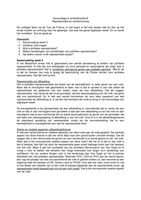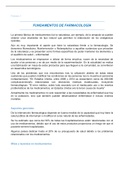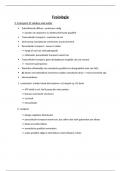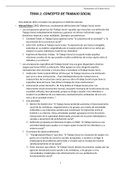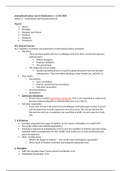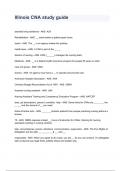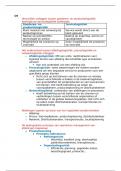Russian Famine of 1891-92 (began along Volga + spread to Urals + Black Sea What the famine told us about the Impact of Industrialisation
Causes (weather) extent to which life changed in Russia
Weather, dry autumn, very cold but didn’t snow (seeds unprotected from frost). Volga flooded + lack of snow
by 1891?
caused water to freeze, killing more seeds. Seeds that weren’t killed blown away via windy spring. Long dry
summer, no rain for over 100 days (all food died). All this lead to famine where over 500k people died by 1892 Industrialisation: limited extent of
Other causes industrialisation
Other causes: Peasants used medieval tech, rarely had modern tech or fertilisers.
Basic railway system couldn’t redistribute grain. Agriculture: Lack of modernisation,
Affected area main place of communal land distribution, peasants had no incentive to improve land/mechanise, still largely agrarian economy
but incentive to produce as many children as possible.
Main blame on govt, refused to use work famine (golod), called it poor harvest (neurozhai) + stopped papers
reporting on it. Grain exports didn’t stop until mid-August + month’s warning for merchants so quickly exported The Church: Lack of change, still
their reserves. Vyshnegradsky opposed ban, seen as main cause as his policy to + consumer taxes to force high level of control over peasants
peasants to sell their grain (even Russian capitalists thought was too harsh). Govt contributed to famine directly
via conscription of peasant sons, sending taxmen to seize livestock when grain ran out + enforcing redemption
Social divisions + hierarchy:
payments
Relief efforts Created stronger demand for
Nov 17th 1891, govt asked people to form voluntary anti-famine organisations national govt (which could respond
Leo Tolstoy (most famous volunteer) blamed Tsar + Orthodox church for famine, church banned peasants taking to famine quicker), famine only
his donations as had excommunicated him. affected peasants, partial loss of
Zemstva got 150M roubles from govt, but only allowed to give to peasants who could pay them back (least needy) faith in Tsar, nobles loss of support
Starving Peasants forced to eat raw donated flour + ‘famine bread’ (mix of moss, goosefoot, bark and husks) for Tsar.
Feb 1892 govt bought 30k Kyrgyz horses so fields could be ploughed.
Problems that hindered economic growth + Socio-economic changes that promoted Positive/Negative/No Change in Rural economy between 1861 and 1904
rising living standards economic growth + improved living standards No change Positive change Negative change
Still used three-course crop rotation Decline in traditional + patriarchal Heavy burden of redemption
system (slowly starting to use multi- world. Money economy entering payments
course crop rotation). rural areas. Sources of income Growing land hunger (arable land
Agrarian-based up until WW1 + becoming more diverse as peasants per household fell from 13.1 to 10.4
predominately peasant country. engaged in more non-farming work. hectares between 1877 and 1905)
Russia’s towns + cities remained Many broke from old extended As pop rose + indirect taxes of mass
peasant in social composition + family to set up new farms, shifted consumer goods meant peasants
character (80% pop in 1897) Most power from older to younger got poorer
workers either migrant peasants or peasants.
children of such.
Status of young + literate peasants
Peasant culture remained rose, as could understand more
conservative modern technologies, threatened
Peasants still poor by European mir (as was patriarchal + age
standards, infant mortality based).
remained highest in Europe. Grain production was growing at a
Central Russia, backwards farming faster rate than pop + peasants
methods + continued domination selling larger proportion of income.
by gentry meant hard for peasants More peasants becoming wealthier
to support themselves on a seven (kulaks).
acre plot. Many fell into debt, sent Grain production rose 3.1%/yr
children to work in towns. Lived on between 1885 and 1914
edge of existence Highest living standards around
central Russia, where commercial
farming taken root in 18th Century
Causes (weather) extent to which life changed in Russia
Weather, dry autumn, very cold but didn’t snow (seeds unprotected from frost). Volga flooded + lack of snow
by 1891?
caused water to freeze, killing more seeds. Seeds that weren’t killed blown away via windy spring. Long dry
summer, no rain for over 100 days (all food died). All this lead to famine where over 500k people died by 1892 Industrialisation: limited extent of
Other causes industrialisation
Other causes: Peasants used medieval tech, rarely had modern tech or fertilisers.
Basic railway system couldn’t redistribute grain. Agriculture: Lack of modernisation,
Affected area main place of communal land distribution, peasants had no incentive to improve land/mechanise, still largely agrarian economy
but incentive to produce as many children as possible.
Main blame on govt, refused to use work famine (golod), called it poor harvest (neurozhai) + stopped papers
reporting on it. Grain exports didn’t stop until mid-August + month’s warning for merchants so quickly exported The Church: Lack of change, still
their reserves. Vyshnegradsky opposed ban, seen as main cause as his policy to + consumer taxes to force high level of control over peasants
peasants to sell their grain (even Russian capitalists thought was too harsh). Govt contributed to famine directly
via conscription of peasant sons, sending taxmen to seize livestock when grain ran out + enforcing redemption
Social divisions + hierarchy:
payments
Relief efforts Created stronger demand for
Nov 17th 1891, govt asked people to form voluntary anti-famine organisations national govt (which could respond
Leo Tolstoy (most famous volunteer) blamed Tsar + Orthodox church for famine, church banned peasants taking to famine quicker), famine only
his donations as had excommunicated him. affected peasants, partial loss of
Zemstva got 150M roubles from govt, but only allowed to give to peasants who could pay them back (least needy) faith in Tsar, nobles loss of support
Starving Peasants forced to eat raw donated flour + ‘famine bread’ (mix of moss, goosefoot, bark and husks) for Tsar.
Feb 1892 govt bought 30k Kyrgyz horses so fields could be ploughed.
Problems that hindered economic growth + Socio-economic changes that promoted Positive/Negative/No Change in Rural economy between 1861 and 1904
rising living standards economic growth + improved living standards No change Positive change Negative change
Still used three-course crop rotation Decline in traditional + patriarchal Heavy burden of redemption
system (slowly starting to use multi- world. Money economy entering payments
course crop rotation). rural areas. Sources of income Growing land hunger (arable land
Agrarian-based up until WW1 + becoming more diverse as peasants per household fell from 13.1 to 10.4
predominately peasant country. engaged in more non-farming work. hectares between 1877 and 1905)
Russia’s towns + cities remained Many broke from old extended As pop rose + indirect taxes of mass
peasant in social composition + family to set up new farms, shifted consumer goods meant peasants
character (80% pop in 1897) Most power from older to younger got poorer
workers either migrant peasants or peasants.
children of such.
Status of young + literate peasants
Peasant culture remained rose, as could understand more
conservative modern technologies, threatened
Peasants still poor by European mir (as was patriarchal + age
standards, infant mortality based).
remained highest in Europe. Grain production was growing at a
Central Russia, backwards farming faster rate than pop + peasants
methods + continued domination selling larger proportion of income.
by gentry meant hard for peasants More peasants becoming wealthier
to support themselves on a seven (kulaks).
acre plot. Many fell into debt, sent Grain production rose 3.1%/yr
children to work in towns. Lived on between 1885 and 1914
edge of existence Highest living standards around
central Russia, where commercial
farming taken root in 18th Century


